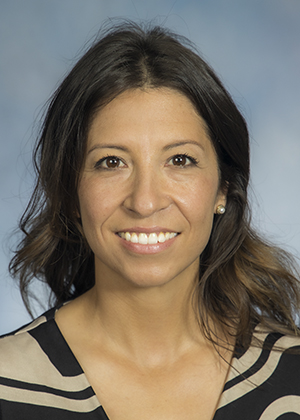‘There’s nothing like it’
13 Jul 2025Meet Vascular Surgeon Sheena Harris, MD
By: Emily Sweet, internal communications lead

The first time Sheena Harris, MD, saw a leg go from gray and pulseless to pink and warm to the touch, it was like watching the body come back to life.
“It goes from a poorly perfused limb — pale, I can't feel a pulse — to pink, hot and I can feel a pulse,” said the vascular surgeon. “There's nothing like it.”
Her voice is warm, her gaze, focused.
“It's immediate gratification,” she said, smiling. “Watching a wound that might have been there for six months slowly go from never closing, to closing up within two or three weeks? The satisfaction is immense."
Reading the wound
Dr. Harris is a vascular surgeon — but she’s also a good detective. The kind who sees a stubborn wound on a toe and starts asking: Why hasn't this healed?
“Wounds are telling us something,” she said. “If it's been there for more than two weeks and hasn't changed size, something is wrong.”
Too late to save
When Dr. Harris first came to Salem, she and her team noticed something alarming: Too many patients were reaching them too late.
“We would meet patients whose limbs had such advanced disease in their arteries,” she said, “or disease like tissue loss or such extensive wounds on their legs . . . we couldn't salvage their legs.”
Only about 40% of patients who lose a limb due to chronic illness ever walk again.
“They often move from being independent to dependent, no longer able to work or support themselves,” Dr. Harris said.
So, they started a program.
Enter: Preserving Extremities
It’s called Preserving Extremities. And it's changing patient care at West Valley and Salem hospitals.
Led by Dr. Harris, with mentorship from Vascular Surgery Medical Director Timothy Hodges, MD, and the help of retired nurse Ann Alway, CNS, the program combines specialists from across Salem Health to identify signs of limb ischemia earlier — and act faster.
“We made sure hospitalists know when to contact us, podiatrists know that we're involved – and we communicate with our general surgery team in terms of who's the best person to be taking care of this patient,” Dr. Harris said. “So basically, we created a program that broke down silos among the different specialties.”
Called to care
Dr. Harris grew up in a small Texas town. She was 17 when she shadowed her first surgeon. Technically, she was volunteering.
“One of the surgeons mistook me for a medical student, and started asking me questions,” she said, laughing. “I was very interested in everything.”
She chased that interest all the way to Texas A&M University, then to Oregon Health & Science University, then to Salem.
“Oregon reminded me of Texas,” she said. Rural. Fewer providers per capita. Patients who were more spread out.
She remembered what one of her Texas mentors had told her: Go where medicine is most needed.
So, she did.
Signs of hope
Today, thanks to the limb salvage program, amputations at Salem Health have dropped from 50 a year to about 30.
“We have noticed a decrease in the number of amputations our group has done over the past four years,” Dr. Harris said.
Still, she says, there's more to do. Education. Outreach. Building better systems.
“The most important thing about a wound is figuring out what causes it,” she said. “If it's been there for more than two weeks and hasn't changed size, something is wrong.”
Sci-fi, snow and pups named after athletes
When she's not operating, Dr. Harris is reading sci-fi.
“One of my favorite science fiction books of all time is the Left Hand of Darkness by Ursula Le Guin,” she said. And of course, she loves Frank Herbert’s Dune.
“I've read it, I think, three times now,” she said, laughing. “And there's a series called The Expanse by James S.A. Corey — it was just like eating cheese balls. It was just amazing. I couldn't stop."
She can also be found exploring the snowy Cascades, backcountry skiing with her husband and their two dogs, Magnus and Yohan (named after a famous cyclist and footballer, respectively).
“You're climbing for six hours sometimes, for one run down,” Dr. Harris said. “But that's part of the beauty of it. It's a very dangerous sport but really allows us to see how beautiful the Pacific Northwest is.”
Beauty like watching a leg turn pink again. Like watching someone walk again.
“It's a valuable service we can offer to the community,” said the vascular surgeon. “As a provider, there's really nothing better than seeing those results.”